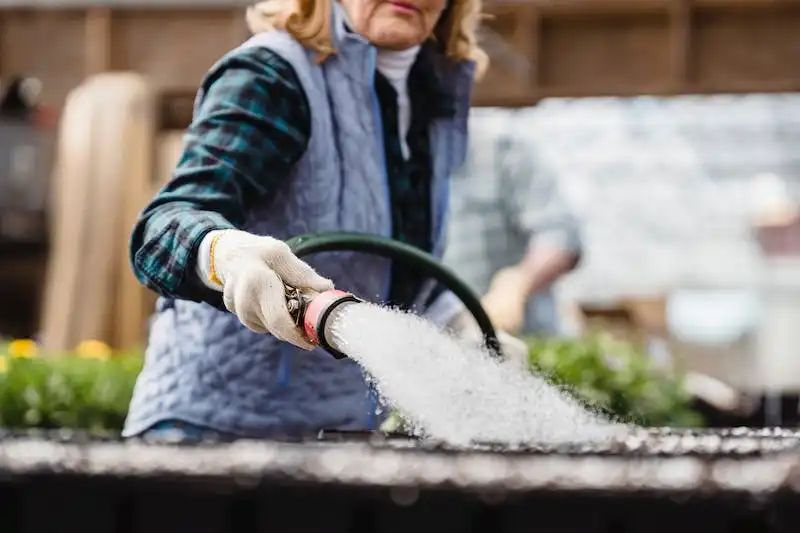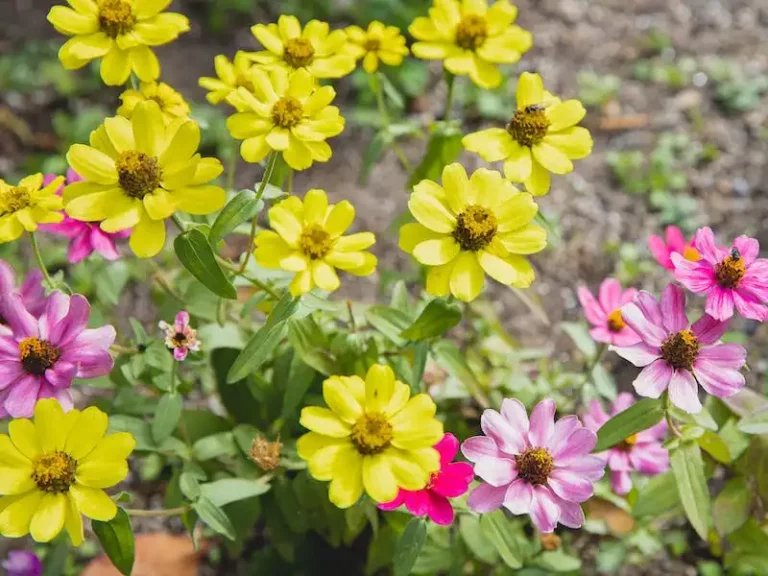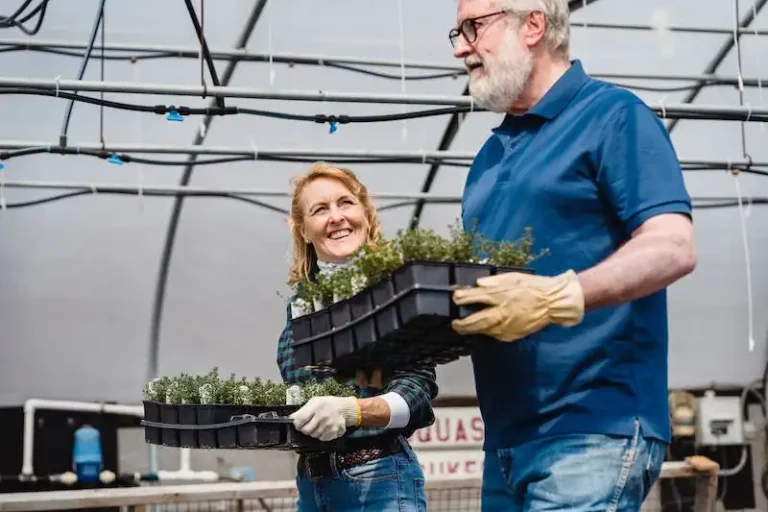When it comes to caring for orchids, repotting is an essential task that all orchid enthusiasts will eventually have to tackle. But why do we need to repot orchids in the first place?
One main reason is that orchids, like any other plant, grow and eventually outgrow their pots. When an orchid becomes overcrowded in its current container, its roots may become tightly packed and have no room to breathe. This can lead to poor drainage, which is bad news for the plant. Repotting allows for the plant to have a larger container that offers better airflow and drainage for healthier root growth.
Another reason for repotting is to provide fresh growing medium for the orchid. Over time, the potting medium breaks down and can become compacted, leaving the roots with little to no room to grow. Choosing the right potting mix is crucial for the orchid’s well-being.
So, when is the right time to repot an orchid? Although there are no hard and fast rules, some signs that indicate a repotting is needed include: the orchid has outgrown its pot, the potting medium has broken down, the roots are rotting or in poor condition, or the plant is not thriving as it should.
In this article, we will discuss how to repot orchids, the different potting mixes available, and some tips and tricks for a successful repotting process.
An Orchid FAQ: How to Repot
Repotting orchids is a great way to ensure their continued growth and health. Many orchids will need to be repotted at some point, either because they have outgrown their current pot or because the potting mix has broken down. Here’s a simplified FAQ to answer some common questions about repotting orchids:
When should I repot my orchid?
Orchids should be repotted when they have outgrown their current pot or when the potting mix breaks down. Signs that your orchid needs repotting include roots growing outside the pot, a pot that is too small, or when the potting mix is old and decomposed.
How do I repot my orchid?
To repot your orchid, start by removing it from its current pot. Gently tap the pot to loosen the potting mix, then carefully remove the plant. Clean the roots, removing any dead or rotten bits. Choose a new pot that is just slightly larger than the old pot. Fill the new pot about half full with an orchid potting mix. Place the orchid in the new pot, positioning it so that the leaves face north. Then, fill the pot with more potting mix, filling in the spaces between the roots. Finally, water the plant thoroughly.
Why is repotting orchids important?
Repotting orchids is important because it allows them to grow in fresh, nutrient-rich potting mix. When orchids are repotted, it is also an opportunity to check the health of the roots and clean off any dead or rotten bits. Additionally, repotting can help prevent root rot and improve drainage, which is crucial for orchid health.
How often should I repot my orchids?
The frequency of repotting orchids depends on the type of orchid, its growth rate, and the potting mix used. Generally, orchids should be repotted every one to two years. However, some orchids may need to be repotted more frequently if they are fast-growing or if their potting mix breaks down quickly. It is best to consult with your local orchid society or an expert for specific guidance on when to repot your orchids.
What potting mix should I use for repotting?
For repotting orchids, it is best to use a well-draining and loose potting mix specifically formulated for orchids. These mixes often contain bark, sphagnum moss, perlite, or other organic materials that provide good airflow and moisture retention. Avoid using regular compost or soil, as they retain too much moisture and can suffocate the orchid roots.
Repotting orchids may seem intimidating at first, but with proper knowledge and technique, it can be a simple and beneficial process for your orchids’ growth. If you have any further questions about how to repot your orchids, don’t hesitate to ask your local orchid society or seek advice from experts in the field.
North of England Orchid Society – An introduction to repotting orchids
Repotting orchids is an important task for any orchid grower. It is necessary to provide the right environment for the plants to thrive and grow. The North of England Orchid Society provides a comprehensive introduction to repotting orchids, offering tips and guidance to help orchid owners successfully repot their plants.
When to repot an orchid is determined by several factors. One of the main indicators is when the orchid has outgrown its current pot. Orchids typically need to be repotted every one to two years, or when the root system has become too large for the pot. Another reason to repot is if the orchid is not thriving or producing new growth. In this case, repotting can help rejuvenate the plant and provide it with fresh nutrients.
The repotting process starts by preparing a repotting kit with all the necessary items. The kit should include a new pot, orchid compost, and tools such as scissors or a knife to remove the old pot. It is also important to have a clean work surface and a household solution, such as bleach, to sterilize the equipment and prevent the spread of bacteria.
Before repotting, it is important to inspect the orchid for any signs of disease or pests. If necessary, these should be treated before repotting to prevent further damage to the plant. Once the orchid is ready, the first step is to carefully remove it from its old pot. This can be done by gently loosening the rootball and sliding the orchid out of the pot. In some cases, if the orchid is tightly rooted, it may be necessary to carefully cut the pot away using a sharp knife or scissors.
Once the orchid is out of its old pot, it is time to examine the root system. Healthy orchid roots should be firm, green, and white in color. Any soft or brown roots should be carefully trimmed away with sterilized scissors or a knife. It is also important to look for any signs of root rot, such as a foul smell or blackened roots. If root rot is present, it is necessary to remove the affected roots to prevent further damage.
After trimming the roots, the orchid can be placed in its new pot. The pot should be chosen according to the size of the orchid and its root system. It is important to have a pot with good drainage holes to prevent water from sitting in the bottom and causing root rot. The orchid should be positioned in the pot with its crown, or the base of its leaves, slightly above the rim of the pot. This allows for proper air circulation and prevents the crown from getting too wet, which can lead to crown rot.
Once the orchid is correctly positioned in the pot, orchid compost can be added to fill in the gaps around the roots. It is important to use a well-draining compost specifically designed for orchids, as using regular potting soil can lead to root rot. The compost should be gently packed down, but not too tightly, to ensure that the orchid’s roots have enough space to grow and obtain oxygen. Moss can also be added to the top of the pot to help retain moisture.
After repotting, it is important to water the orchid thoroughly to help settle the compost and provide the plant with hydration. However, it is important to avoid overwatering, as orchids are sensitive to wet feet. A good tip is to use a watering can or spray bottle with a fine mist setting to water the orchid. This allows for moisture to be evenly distributed without overwhelming the roots.
After repotting, the orchid should be placed in a suitable location with the right amount of light and temperature for its specific needs. It is also important to continue regular care and maintenance to ensure the orchid’s health and well-being. By following the repotting guidelines provided by the North of England Orchid Society, orchid owners can successfully repot their plants and enjoy their beautiful blooms for years to come.
How to repot orchids
If your orchid is getting too big for its pot or the potting medium is breaking down, it’s time to repot. Orchids usually need to be repotted about once every one to two years, or sooner if the potting medium has started to decompose.
When repotting orchids, it’s important to use a well-draining potting mix to ensure the roots can thrive. Orchids have unique drainage needs, so using a mix specifically designed for orchids is recommended. You can find orchid mixes at your local garden center or online.
In order to repot your orchid, start by choosing a pot that is slightly larger than the current one. Orchids don’t usually require a pot with a lot of extra space, as a tight fit can actually help the roots stay stable. A plastic pot is a great option, as it is light, easy to clean, and won’t rot like a wooden pot. Make sure the pot has drainage holes in the bottom.
Before repotting, you may have some questions like: What potting mix should I use? When is the best time to repot? How do I know if my orchid needs repotting?
For potting mixes, orchids prefer a loose medium that allows for plenty of airflow around the roots. Orchid mixes often consist of bits of bark, sphagnum moss, and other materials. If you’re unsure about what mix to use, you can always ask a local orchid grower or visit your local orchid society for recommendations.
As for the best time to repot, it is generally recommended to repot orchids in spring or summer when they are actively growing. However, if your orchid is in immediate need of repotting due to a root issue or the potting medium is completely deteriorated, you can repot it at any time of the year. Just be sure to water the orchid less frequently after repotting.
In order to repot your orchid, carefully remove it from its current pot. Gently tap the sides of the pot or use a knife to loosen the orchid from the potting medium. Once the orchid is free, inspect the roots for any signs of rotting or disease. Trim off any dead or rotted roots with a clean knife.
Next, place your orchid in its new pot and add fresh potting mix around the roots, making sure to gently press the mix down to ensure it is secure. The base of the leaves should be level with the top of the pot. Be careful not to bury the orchid too deeply.
After repotting, water your orchid thoroughly and place it in a location with the correct light and temperature conditions for its specific needs. Allow the orchid some time to adjust to its new pot before expecting to see new growth or blooms.
Here’s a list of frequently asked questions about repotting orchids:
– How do I know if my orchid needs repotting?
– What potting mix should I use for orchids?
– When is the best time to repot orchids?
– Can I use regular household soil to repot my orchid?
– How often should I repot my orchid?
Remember, repotting orchids can be a bit finicky, but with the right technique and knowledge, you can help your orchid thrive in its new container.




